FabLab Cept
CAD Modelling
I used Rhino because it is easy to model 2D and 3D designs. Also I need Grasshopper -Kangaroo to simulate my final project ideas, and these are Rhino Plugins.
Rhino can be downloaded from here.
Rhino tutorials are easily available online, some of them can be found here.
Following are the steps I tried for modelling and simulating my component
1. First of all I made the base Geometry in Rhino using line command. The lines are distributed in 2 different layers, the Red lines will be considered for Mountain folds and the Green lines will be considered for Valley folds.
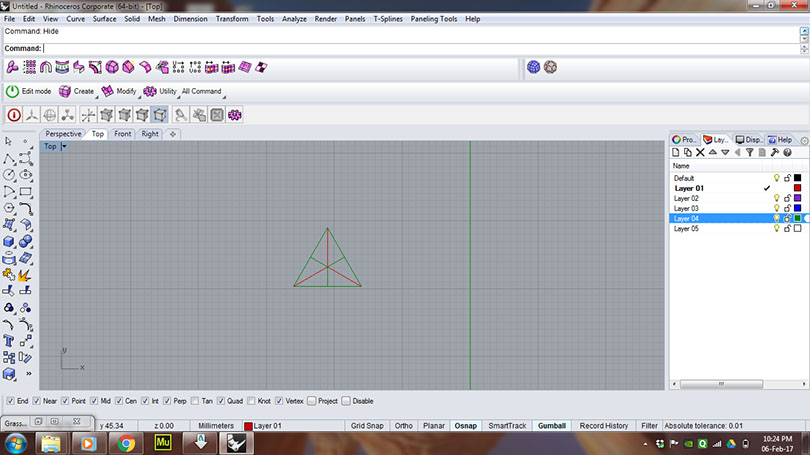
2. This component is copied to form a repetitive pattern
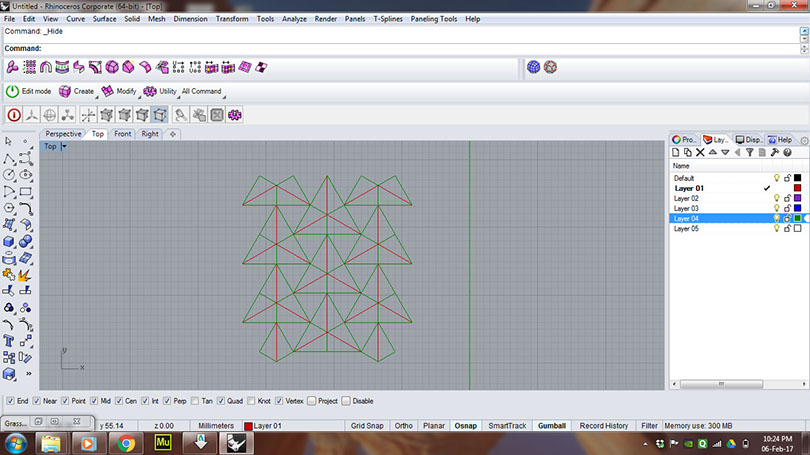
3. Each triangle is converted into a Mesh. I should have created Mesh first and then copied it along with the lines. Each mesh is selected and joined using command "Join" in Rhino.
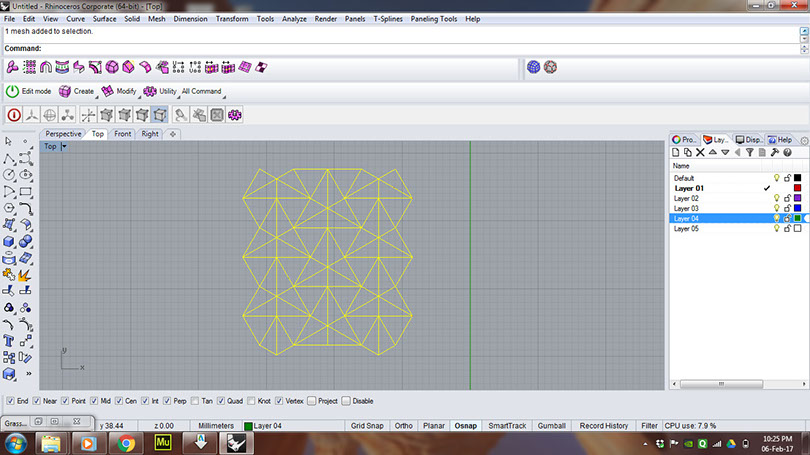
4. Next I wanted to use Grasshopper-Kangaroo for simulation of this origami pattern.
These tool can be downloaded from here.
Once the installation is done, the first step is to open Grasshopper by typing "grasshopper" in the command line. Next step is to borrow the mesh from Rhino to grasshopper. This is done by using Mesh param , right clicking it and selecting "set one mesh" and selecting the mesh from Rhino.
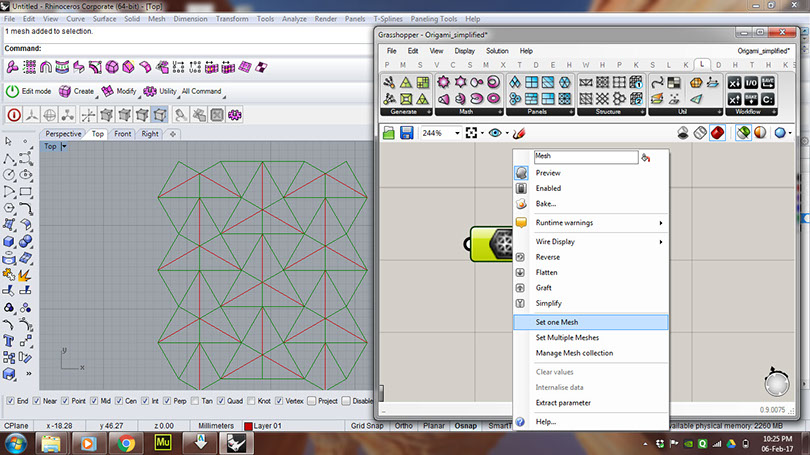
5. Next step is to use curve param and to store valley fold lines(greencolour) from rhino by right clicking and selecting "set multiple curves"
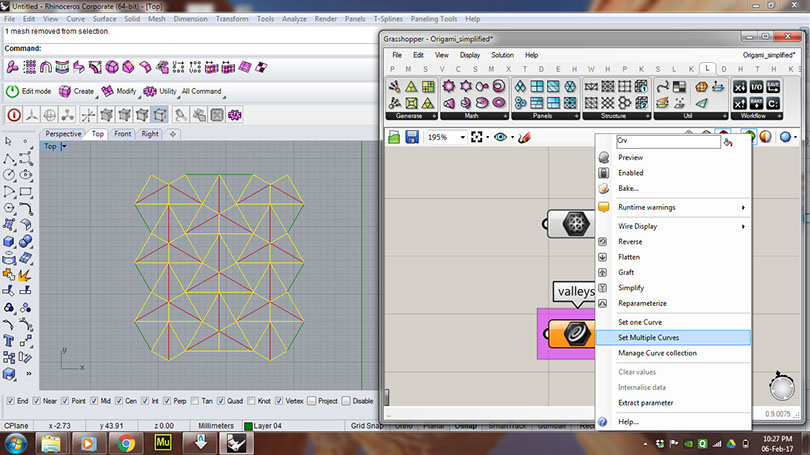
6. In similar way, mountain fold lines(red) are stored in another curve param.
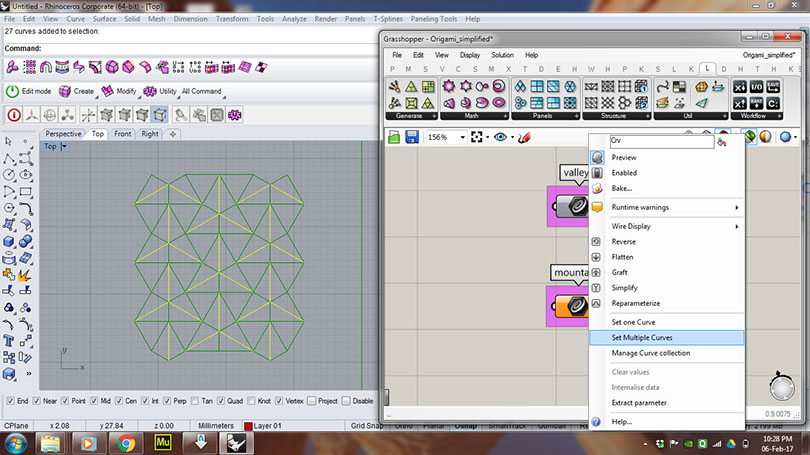
7. Double-clicking on the canvas and typing "origami" gives you that component. Mesh, mountain fold lines and Valley fold lines are connected to the respective inputs
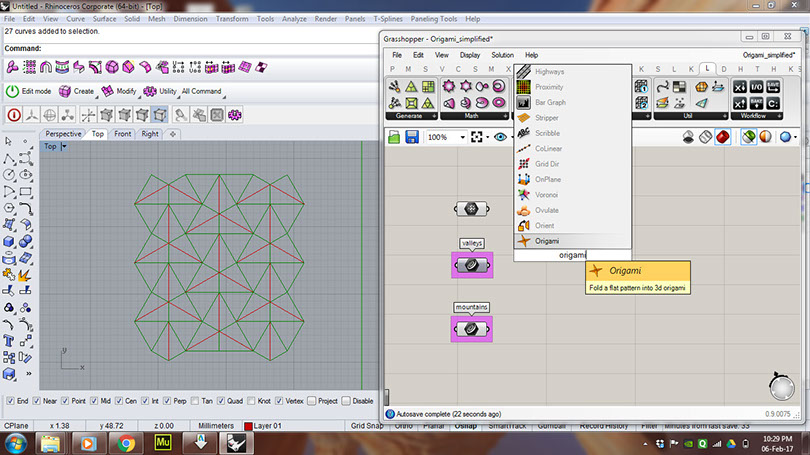
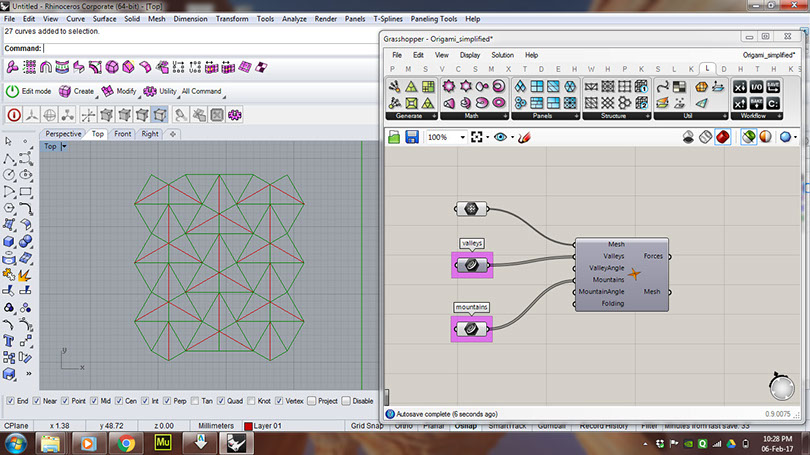
8. 2 angle values are connected to mountain and valley angles. These represent the maximum fold angles that need to be targeted. A number slider is connected to "folding" input which ranges from 0 to 1, 0 being the minimum folding and 1 being the maximum folding.
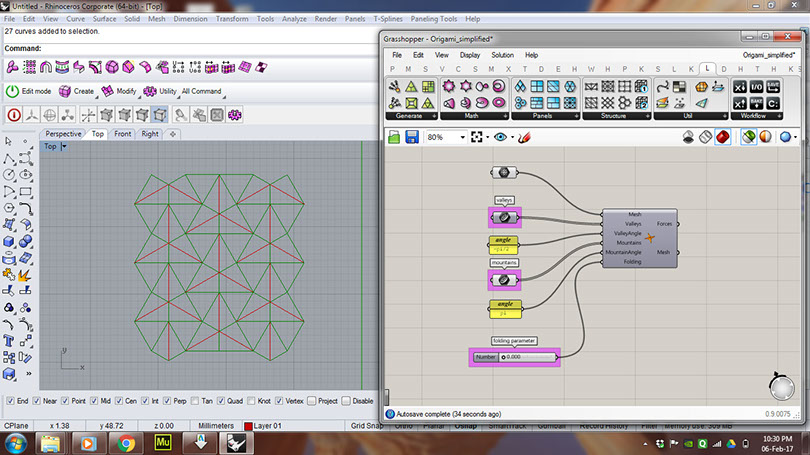
9. Double-clicking on the canvas and typing "Kangaroo Physics" leads you to that component. Next step is to connect the outputs from "origami" component to the inut of "kangaroo physics" component.
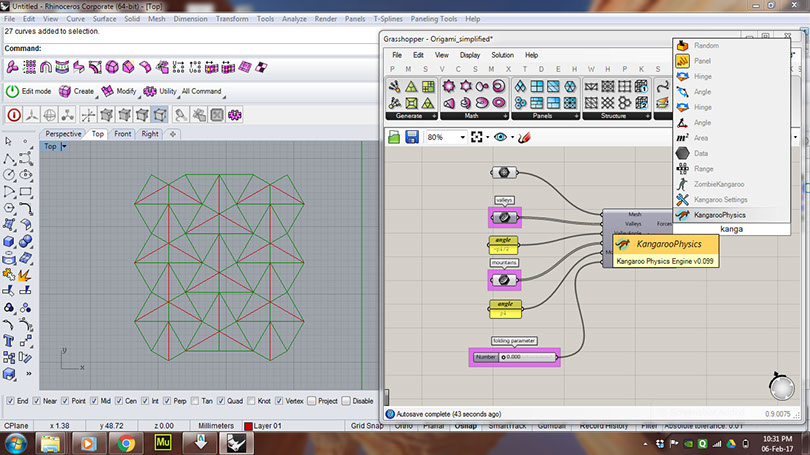

10. To view the edges and surface, "mesh edge" and "custom preview" component are connected to the output of kangaroo physics
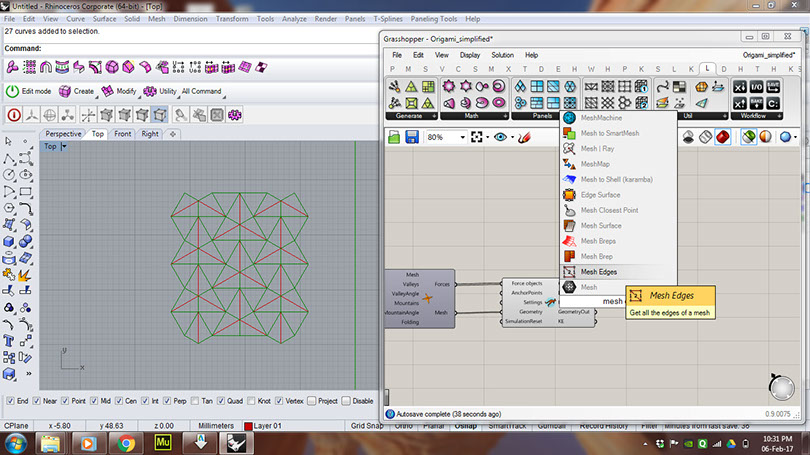
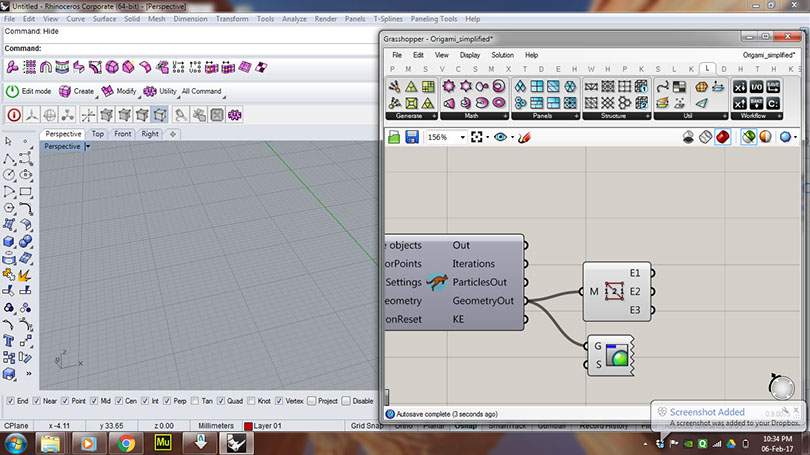
11. Once the set-up was ready, simulation was initiated by double clicking the "kangaroo physics" component and pressing "play" button. Increase in folding can be observed as the slider for folding is increased from 0 to 1
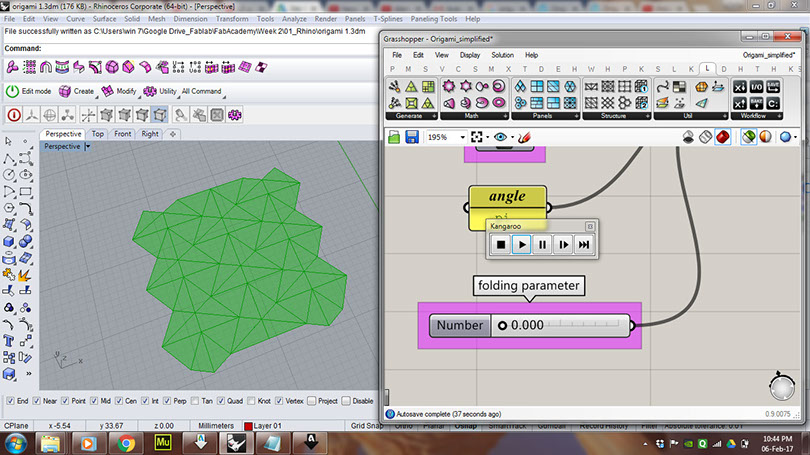
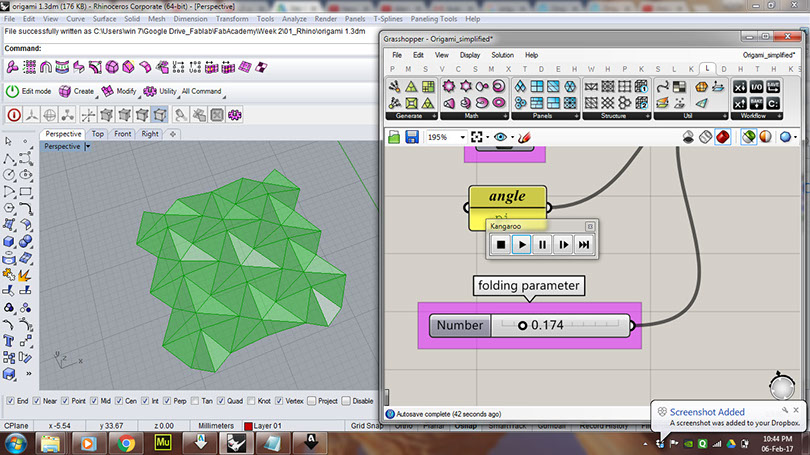
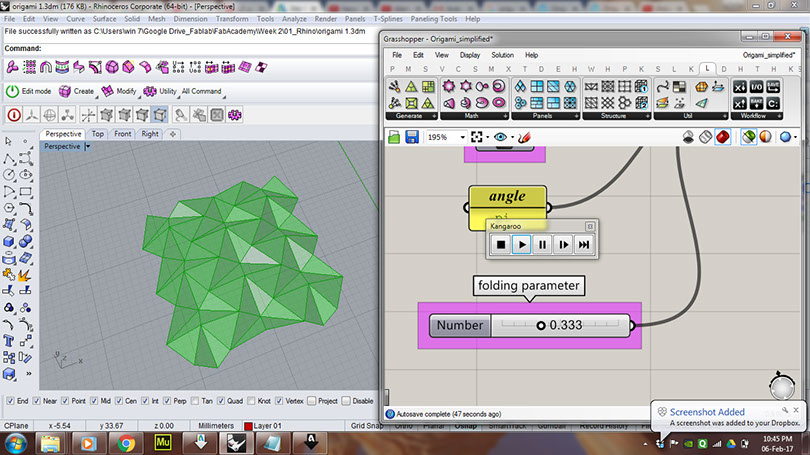
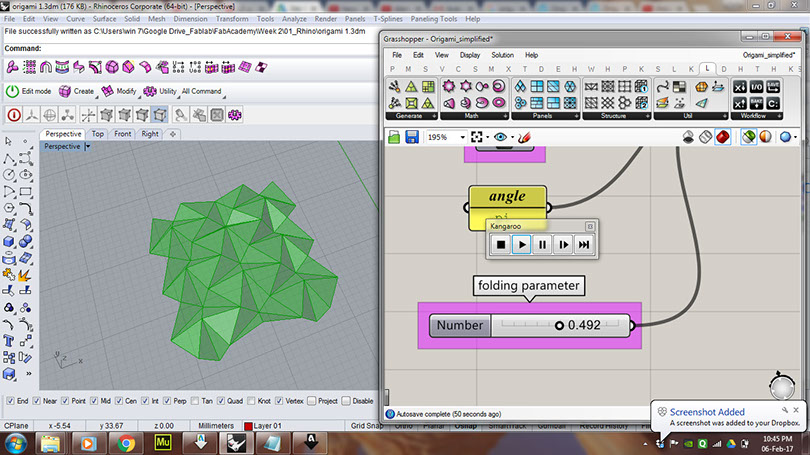
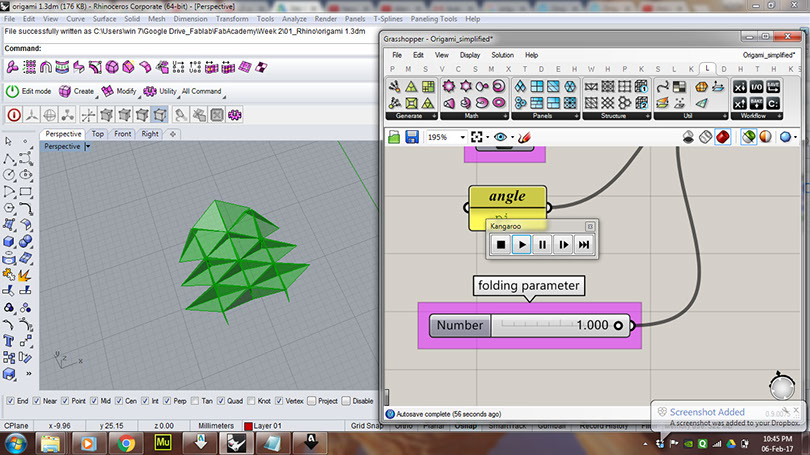
I tried the same process with another geometry to achieve a different form.
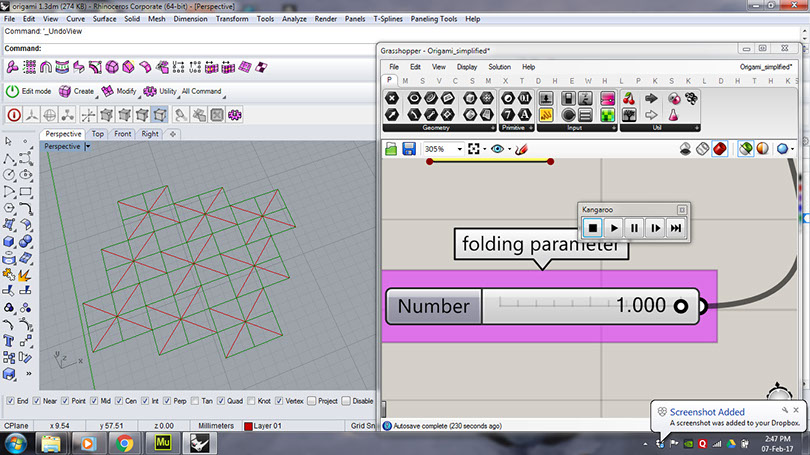
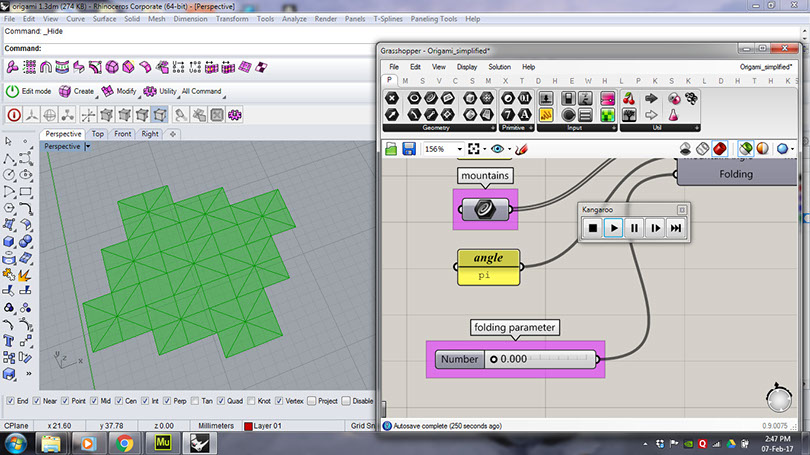
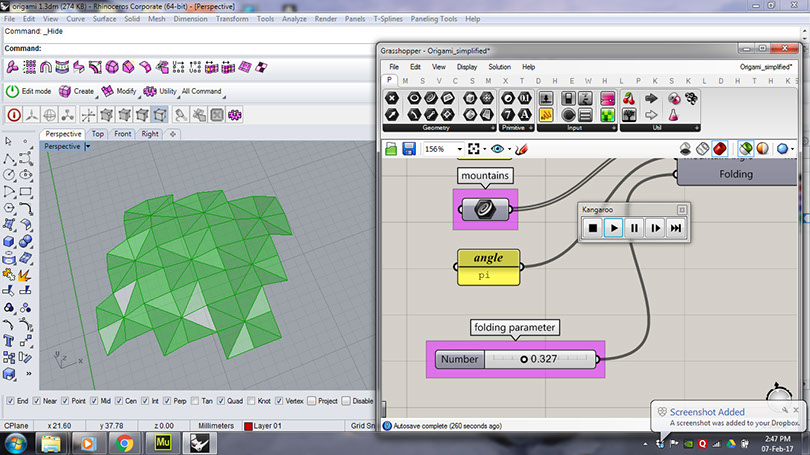
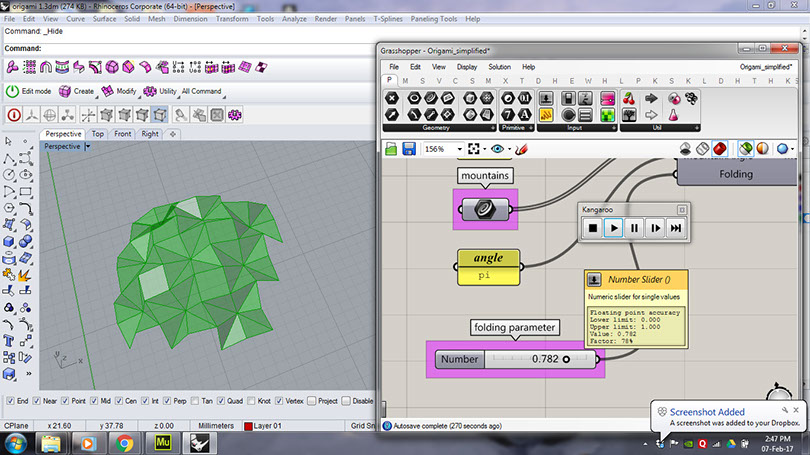
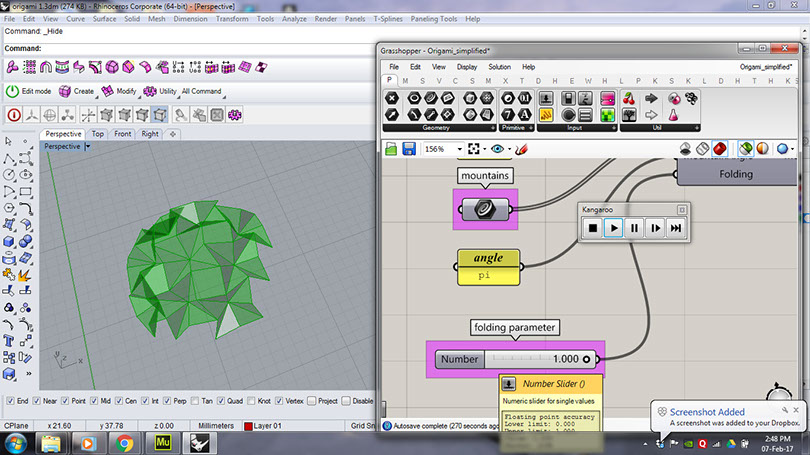
Design files can be found here.